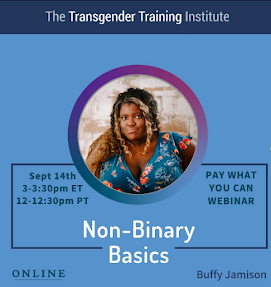"The most powerful assessment educators can use to influence student learning and foster hope and efficacy is at the classroom level. We must shift our time and attention to the work that matters most."
Cassandra Erkens, et al, Essential Assessment: Six Tenets for Bringing Hope, Efficacy, and Achievement to the Classroom
In the years that I spent as a middle school instructional coach, I frequently talked with teachers about their grading and assessment practices. With a new role in the BSD Teaching and Learning Office, I continue to have a lot of conversations about assessment, grading, and reporting in our middle and high schools.
Recently I met with a group of middle school teachers, instructional coaches and tech integrationists. One of the teachers in the group had asked me for an update on future plans for middle school reporting. My answer was this: there are no planned changes to the middle school report cards. Here's why: our strategic plan lays out five priority areas that multi-stakeholder groups identified, all of which are focused on improving outcomes for all students. As a district, we’re concentrating our efforts to achieve deeper learning for each and every student through our teaching practices, and because of this, we’re not currently investing time or resources into revising or re-imagining report cards.
But we do want to clarify and create consistency in our assessment practices, both within our buildings and across buildings. There are important reasons for this. Unifying around our assessment and grading practices makes it easier for students, families, and the staff who support students to understand students' achievement levels and ways that they can improve.
Lots of layers here. Jocelyn Fletcher Scheuch, who works with me in the Teaching and Learning Office, has been one of the shepherds of our secondary schools' journey toward proficiency-based teaching, learning and assessment. She sat down with me for a conversation about the state of assessment and grading in our district at the secondary level. This blog post attempts to capture some of that conversation, as well as the myriad others I have had in the last few months.
Let’s start with defining terms:
- Assessment: determining a student’s achievement level relative to a specific learning goal or standard
- Formative assessment: information about student progress toward the achievement of learning goals for the purpose of informing instruction and improving learning (Moss & Brookhart)
- Summative assessment: “assessment that is conducted after the learning has taken place to certify what has been learned" (Moss & Brookhart)
- Grading: assigning a value to a student’s achievement level
- Reporting: formalized, official communication of student achievement
Having distinguished between assessments, grades, and report cards, we need to get honest with ourselves about how we're collectively doing on clarity and consistency. Across our middle and high schools, and even within buildings, departments and learning teams, there continues to be significant variation in teachers' assessment and grading practices. We ought to take a look at that.
Take rubrics, for instance.
Each of us has our own favorite approach, language, and format, I know I do. Some of us (including me) spend hours perfecting and tweaking the rubric we use so that it will be just right. But all those individual teacher choices and approaches mean that a student might experience four or five different types of assessment tools in the course of a week, all with different orientations, some reading left to right, others right to left, some 3 point scale, others 5 or 6, like the one pictured from Myron Dueck's Giving Students at Say: Smarter Assessment Practices to Empower and Engage. Some have grades at the top of the categories, others have words, and still others have points. One says “Emerging” or "Novice" at the top of the column; another says “Beginning”.
And this means that every time a student gets an assessment that has a rubric attached - which ought to tell them about their progress toward achieving a set of learning goals - they have to first figure out how to read the rubric. This is not student-centered. If we all got on the same page, and based our approach on best practice, it would benefit our students.
Back to the conversation with middle school teachers. After we talked for a bit about what we, in the Teaching and Learning Office, are recommending, requiring or not requiring, and planning or not planning for the proficiency-based future, Design and Tech teacher Nathan Caswell summarized it this way: in a proficiency-based system, there are three levels. The first level is proficiency-based teaching. The second level is proficiency-based assessment and feedback, and the third level is proficiency-based reporting. As teachers, we’re focused on the first two: teaching and assessment, and both of these can be levers for deeper learning. Just because we aren’t moving to a proficiency-based report card doesn’t mean we can’t be proficiency-based.
Yes, Mr. Caswell. Exactly.
Stay tuned next week for some specific recommendations, examples, guidance, and clarification on requirements.
For further reading
Susan Brookhart, Grading and Learning: Practices That Support Student Achievement. Solution Tree, 2011.
Myron Dueck. Giving Students at Say: Smarter Assessment Practices to Empower and Engage. ASCD, 2021.
Cassandra Erkens, et al, Essential Assessment: Six Tenets for Bringing Hope, Efficacy, and Achievement to the Classroom. Solution Tree, 2017.
Connie Moss & Susan Brookart, Advancing Formative Assessment in Every Classroom: A Guide for Instructional Leaders. ACSD, 2009.









.jpg)
